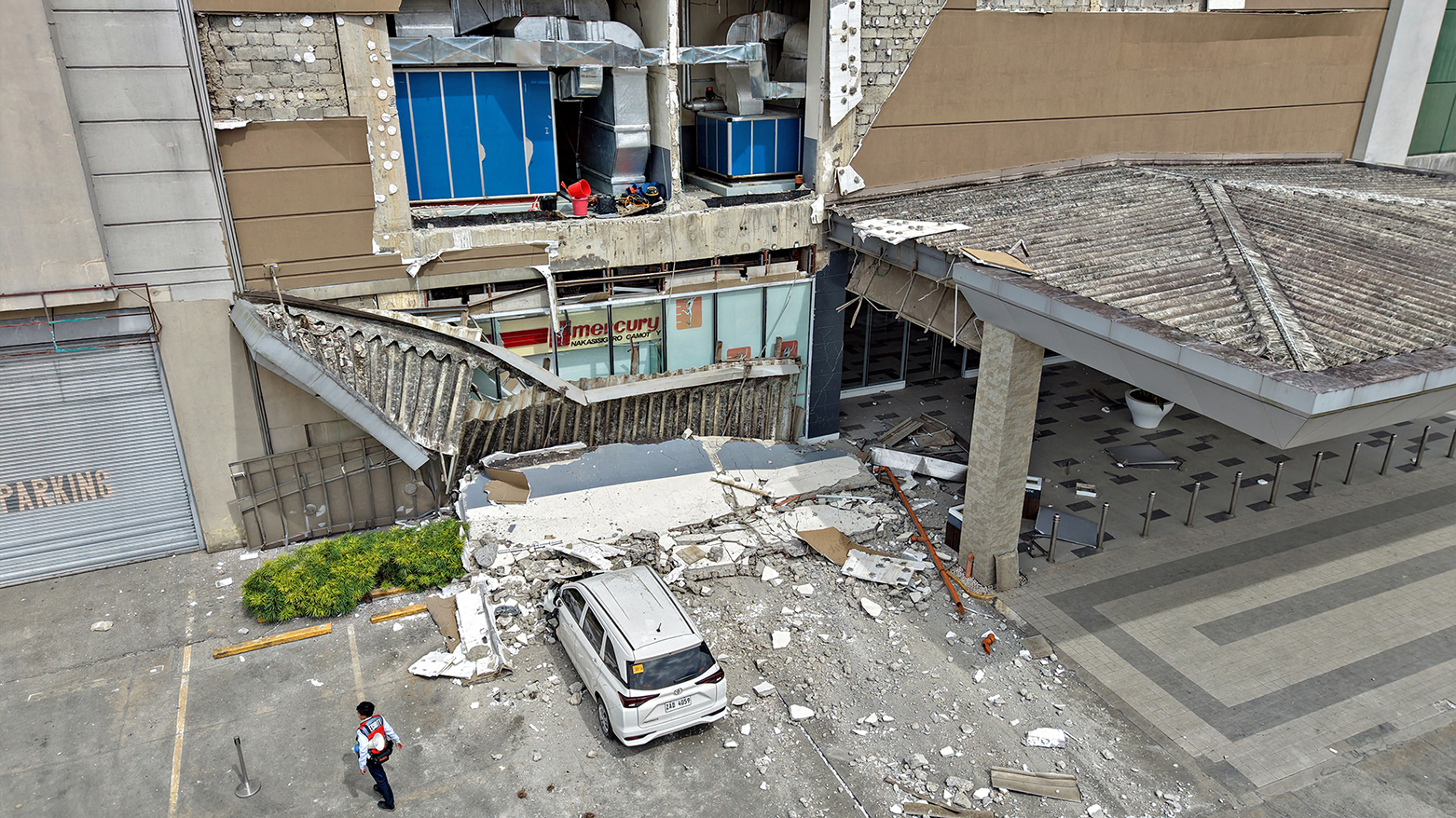Magnitude 7.5 Quake Rocks Southern Philippines; Tsunami Warning Lifted After Mass Evacuations
A 7.5-magnitude earthquake hit Davao Oriental, Philippines, prompting mass evacuations and a tsunami warning, which was later lifted by authorities.

ERBIL (Kurdistan24) - A powerful and shallow magnitude 7.5 earthquake rocked the southern Philippines on Friday morning, triggering a widespread tsunami warning that sent thousands of residents in coastal communities scrambling for higher ground and prompting a swift, full-scale response from the national government, according to The Manila Times.
The Philippine Institute of Volcanology and Seismology (Phivolcs) reported that the quake struck at 9:43 a.m. near the municipality of Manay in Davao Oriental province, jolting several major cities across the Mindanao region.
While the initial tsunami alert, which also covered parts of Palau and Indonesia, was later lifted, the incident served as a stark and terrifying reminder of the immense seismic risks faced by the archipelagic nation, which lies along the volatile Pacific "Ring of Fire."
According to the earthquake bulletin issued by Phivolcs, the powerful tremor, which was initially measured at a magnitude of 7.6 before being revised to 7.5, was felt across a wide area. A strong Intensity V was recorded in Davao City, the most populous city in Mindanao, while an Intensity IV was felt in Bislig City in Surigao del Sur.
The immediate aftermath of the quake was marked by a sense of urgency and caution. In Davao City, the local government immediately announced the suspension of classes at all levels in both public and private schools to allow for a rapid and thorough assessment of any potential damage to infrastructure and public facilities, a measure designed to ensure the safety of students and staff.
The most immediate and pressing concern following the powerful offshore quake was the threat of a tsunami. As reported by The Manila Times, Phivolcs promptly issued a tsunami warning for the coastal areas of the southern Philippines.
This was echoed by the Pacific Tsunami Warning Center, which extended its alert to include Palau and Indonesia. In response to this imminent threat, Philippine authorities initiated a massive and coordinated evacuation effort.
Bernardo Rafaelito Alejandro IV, the Officer-in-Charge of the Office of the Civil Defense (OCD), ordered a "forced evacuation" of all residents in the coastal areas along the provinces of Eastern Samar, Dinagat Island, Davao Oriental, Southern Leyte, Surigao del Norte, Leyte, and Surigao del Sur.
In a press briefing, Alejandro explained the gravity of the situation, urging residents to move to safety and advising boat owners to "secure their boats and to move away from the waterfront while boats already at sea should stay offshore in deep waters until further notice."
Initial information from Phivolcs had indicated that the first tsunami waves were expected to arrive between 9:43 a.m. and 11:43 a.m. Based on the agency's tsunami scenario database, it was projected that the waves could have reached heights of over one meter on normal tides, with the potential to be even higher in enclosed bays and straits.
The national government's response was swift and comprehensive. President of the Philippines, Ferdinand Marcos Jr., assured the public of the government's rapid mobilization, stating that officials were "assessing the situation on the ground and ensuring that everyone is safe."
In a statement reported by The Manila Times, the president detailed the extensive measures being taken. "I have directed the National Disaster Risk Reduction and Management Council, the Office of Civil Defense, the Armed Forces of the Philippines, the Philippine Coast Guard, and all concerned agencies to immediately carry out evacuations in coastal areas, activate emergency communication lines, and coordinate closely with local governments,” President Marcos said.
He confirmed that the logistical preparations for a large-scale relief effort were already in motion. "Search, rescue, and relief operations are already being prepared and will be deployed as soon as it is safe to do so," he added. "The Department of Social Welfare and Development is pre-positioning food and non-food items, while the Department of Health is ready to provide emergency medical assistance."
The Philippines' president also made a direct appeal to the public for calm and cooperation. "Please stay alert and calm and heed all warning and instructions from authorities for their safety," he urged. "We are working round the clock to ensure that help reaches everyone who needs it. Let us continue to look out for one another and pray for the safety of all our countrymen.”
Several hours after the quake, the immediate threat of a tsunami subsided. The Pacific Tsunami Warning Center officially lifted its alert for the Philippines, Palau, and Indonesia, stating, "There is no longer a tsunami threat from this earthquake."
Phivolcs also revised its initial magnitude reading of the quake down to 7.4. Despite the lifting of the warning, the powerful tremor served as a jarring reminder of the country's vulnerability.
The tremor was the latest in a series of significant seismic events to hit the Philippines recently, following a magnitude 6.9 earthquake that struck Cebu and a magnitude 4.4 tremor that was felt in La Union and Baguio.
As residents in the evacuated coastal areas cautiously began to return to their homes and authorities continued their damage assessments, the incident highlighted the critical importance of the nation's disaster preparedness and response systems in a region where the ground is never truly still.
